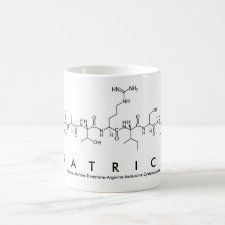
Authors: Redeker ES, Eersels K, Akkermans O, Royakkers J, Dyson S, Nurekeyeva K, Ferrando B, Cornelis P, Peeters M, Wagner P, DiliŽn H, Van Grinsven B, Cleij TJ
Article Title: Biomimetic Bacterial Identification Platform Based on Thermal Wave Transport Analysis (TWTA) through Surface-Imprinted Polymers.
Publication date: 2017
Journal: ACS Infectious Diseases
Volume: 3
Issue: (5)
Page numbers: 388-397.
DOI: 10.1021/acsinfecdis.7b00037
Alternative URL: https://e-space.mmu.ac.uk/618332/
Abstract: This paper introduces a novel bacterial identification assay based on thermal wave analysis through surface-imprinted polymers (SIPs). Aluminum chips are coated with SIPs, serving as synthetic cell receptors that have been combined previously with the heat-transfer method (HTM) for the selective detection of bacteria. In this work, the concept of bacterial identification is extended toward the detection of nine different bacterial species. In addition, a novel sensing approach, thermal wave transport analysis (TWTA), is introduced, which analyzes the propagation of a thermal wave through a functional interface. The results presented here demonstrate that bacterial rebinding to the SIP layer resulted in a measurable phase shift in the propagated wave, which is most pronounced at a frequency of 0.03 Hz. In this way, the sensor is able to selectively distinguish between the different bacterial species used in this study. Furthermore, a dose-response curve was constructed to determine a limit of detection of 1 x 10^4 CFU mL-1, indicating that TWTA is advantageous over HTM in terms of sensitivity and response time. Additionally, the limit of selectivity of the sensor was tested in a mixed bacterial solution, containing the target species in the presence of a 99-fold excess of competitor species. Finally, a first application for the sensor in terms of infection diagnosis is presented, revealing that the platform is able to detect bacteria in clinically relevant concentrations as low as 3 x 10^4 CFU mL-1 in spiked urine samples
Template and target information: bacteria
Author keywords: bacterial identification, cross-selectivity matrix, mixed bacterial solution, Surface-imprinted polymers, thermal wave transport analysis (TWTA)



Join the Society for Molecular Imprinting

New items RSS feed
Sign-up for e-mail updates:
Choose between receiving an occasional newsletter or more frequent e-mail alerts.
Click here to go to the sign-up page.
Is your name elemental or peptidic? Enter your name and find out by clicking either of the buttons below!
Other products you may like:
 MIPdatabase
MIPdatabase









